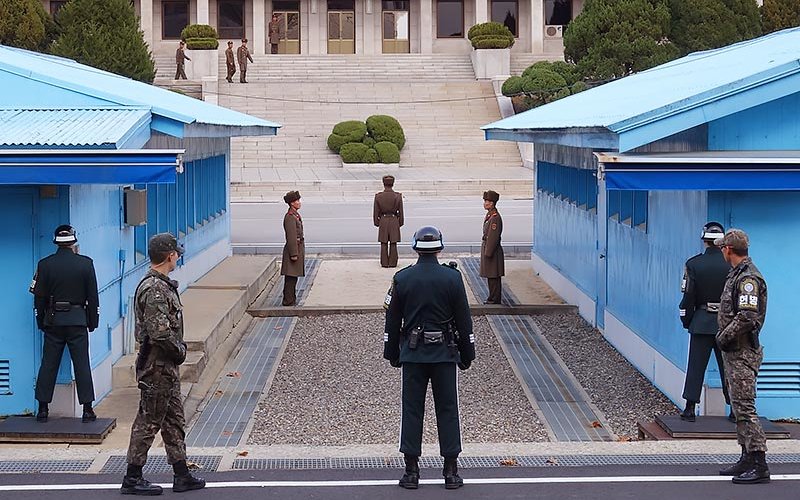
Amidst heightened military tensions between North and South Korea, the two nations recently met face-to-face in the Demilitarized Zone for the first time in more than two years. The January talks resulted in announcements that North Korea would send a delegation of athletes to the 2018 Winter Olympics in PyeongChang, South Korea, and that the two countries would march together under one flag.
Cal State Fullerton historian Kristine Dennehy sees the talks as a step toward improved relations for the divided country.
“We’ve historically seen how sports can be a venue for people-to-people exchanges, and we’ve also seen how it can be a ruse,” she says. “I think we don’t know the tip of the iceberg in terms of what the politicians and diplomats are up to, but in my view, it’s promising.”
The chair and professor of history is a scholar on post-colonial Korean and Japanese history, and advocates for both an academic understanding of world history, as well as immersive experiences that give students a deeper look at other cultures.
“For one thing, we’re a public institution, and I feel like you can’t completely separate Korean and American history,” she says. “There are strong ties between the two countries, so it’s helpful to know some of the patterns and things that have happened in the past to give us a better understanding of contemporary situations.
“Also, if you are going to be part of the global workforce, you should be interested in what’s going on in both North and South Korea.”
Dennehy, who can speak both Japanese and Korean and has spent time living in both countries, says, “I believe that cross-cultural exchanges can really change the world.”
At CSUF, she teaches such courses as “Themes in Korean History,” which introduces students to topics such as state building, Confucianism, nationalism, the colonial period, the Korean War and reunification of the peninsula.
“It’s surprising to me that Orange County has such a large Korean population, but many people don’t know some of the basic history of the country’s division and the United States’ role in that,” says Dennehy.
Following World War II, Japan surrendered its 35-year rule over Korea. The country was divided at the 38th parallel, with the Soviet Union occupying the north and the U.S. occupying the south.
“The division was supposed to be temporary,” says Dennehy. “And even today, there is a strong sentiment in parts of Korea that there aren’t two Koreas — that the division between north and south is an artificial divide.”
But the Korean War from 1950-53 — with the Soviet Union and China supporting North Korea, while the United States defended South Korea — intensified the division between the two nations. Following the war, the south experienced a prosperous industrial boom while the north remained isolated under the Kim family dynasty.
In subsequent decades, North Korea’s rise as a nuclear power can perhaps best be understood as an element of the ideology of self-reliance, says Dennehy.
“We’ve seen the power that nuclear weapons gives you in the world,” she explains. “The development of nuclear technology is the latest iteration of how a country works to gain some legitimacy and autonomy in the world.
“Obviously, the consequences are so dire,” she emphasizes.
Upcoming Event
Dennehy will present a Jan. 23 talk at the Fullerton Public Library covering the current nuclear crisis on the Korean Peninsula and its effects for the region and the United States. Her talk on “A Divided Korea” will discuss the Kim family, the North Korean state and how U.S. policy is influencing political tension. The event takes place from 7-8:45 p.m. in the Conference Center’s Community Room. For more information, call 714-738-6326.